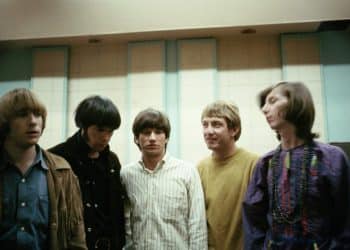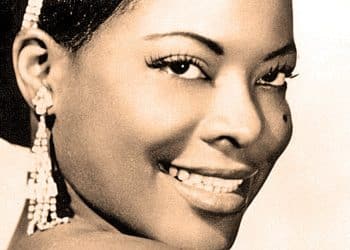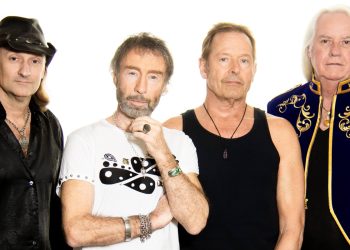Jazz isn’t just music—it’s a heartbeat, a conversation, an ever-evolving art form that has shaped generations and transcended borders. From smoky clubs in New Orleans to grand concert halls in Paris, jazz has been the soul of innovation, rebellion, and raw emotion. In this article, we’re diving deep into the timeless essence of jazz by counting down the Top 15 Most Popular Best Jazz Songs of All Time—tracks that not only defined the genre but also captivated the world.
Whether you’re a seasoned jazz aficionado or a curious newcomer eager to understand what makes this genre so magical, these classics are the perfect place to begin your sonic adventure. These aren’t just chart-toppers or catchy tunes—they’re cultural landmarks, each with its own story, style, and spirit. From the sultry swing of Ella Fitzgerald to the revolutionary genius of Miles Davis, every note on this list has earned its place in music history.
Get ready to snap your fingers, sway to the rhythm, and rediscover the golden standards that made jazz a universal language. Let’s explore the melodies that continue to echo through time—the jazz masterpieces that the world will never forget.
1. “Strange Fruit” – Billie Holiday (1939)
Few songs in history are as haunting and impactful as Strange Fruit, Billie Holiday’s chilling protest against racism and lynching in America. Released in 1939, the song was originally a poem written by Abel Meeropol, but Holiday’s raw and emotional performance transformed it into one of the most powerful pieces of social commentary ever recorded. The sparse instrumentation—just a slow, mournful melody—puts the focus squarely on the stark, painful lyrics. Holiday’s voice carries an aching sorrow that makes the song impossible to ignore. Strange Fruit was more than just a song; it was a bold political statement that challenged audiences and cemented jazz as a vehicle for activism. Even decades later, its impact remains profound.
2. “My Favorite Things” – John Coltrane (1961)
John Coltrane took a Broadway show tune and transformed it into an ethereal jazz masterpiece with his 1961 recording of My Favorite Things. Trading his usual tenor saxophone for a soprano, Coltrane’s version of the song is mesmerizing, with cascading scales and hypnotic phrasing that turn the familiar melody into something deeply spiritual. The track’s waltz-like rhythm remains intact, but Coltrane’s modal improvisations elevate it into a realm beyond traditional jazz. The result is an enchanting and timeless piece that became one of Coltrane’s signature works. His interpretation helped introduce modal jazz to a wider audience, cementing My Favorite Things as both a jazz standard and an artistic triumph.
3. “What a Wonderful World” – Louis Armstrong (1967)
With his signature gravelly voice, Louis Armstrong turned What a Wonderful World into one of the most uplifting and universally loved songs ever recorded. Released in 1967, the song stood in stark contrast to the turbulent social climate of the time, offering a simple yet powerful message of hope, love, and appreciation for life’s beauty. The lush orchestral arrangement complements Armstrong’s heartfelt delivery, making it an instant classic. Though it didn’t achieve immediate success in the U.S., it later became one of Armstrong’s most enduring hits, resonating across generations. More than just a jazz standard, What a Wonderful World is a timeless anthem of optimism.
4. “Take Five” – Dave Brubeck (1959)
Few jazz compositions are as instantly recognizable as Take Five, a groundbreaking piece from Dave Brubeck’s 1959 album Time Out. Though credited to Brubeck’s quartet, it was actually composed by his saxophonist, Paul Desmond. What set this piece apart was its unconventional 5/4 time signature—a rarity in jazz at the time. The song’s cool, hypnotic groove, driven by Desmond’s silky saxophone melody and Brubeck’s intricate piano riffs, became a defining moment in jazz history. Joe Morello’s effortless yet complex drum solo further cemented Take Five as a masterpiece of innovation. Despite its complexity, the song exudes a laid-back, almost effortless charm, embodying the modern jazz movement of the late 1950s. It remains one of the most celebrated and commercially successful jazz instrumentals ever recorded.
5. “So What” – Miles Davis (1959)
Opening Miles Davis’ legendary album Kind of Blue, So What is the epitome of cool, minimalist jazz. Released in 1959, the song is built on a simple two-note motif, introduced on bass before Davis’ muted trumpet takes over with an effortlessly smooth melody. The track’s modal structure allowed for freer improvisation, paving the way for groundbreaking solos by saxophonists John Coltrane and Cannonball Adderley. Unlike the intricate chord changes that defined earlier jazz styles, So What embraced a spacious, open-ended harmonic approach that revolutionized the genre. Davis’ restraint and the band’s effortless interplay make this track a defining moment in jazz history, influencing generations of musicians.
6. Sing, Sing, Sing – Benny Goodman (1936)
Few songs define the swing era quite like Benny Goodman’s Sing, Sing, Sing. Originally composed by Louis Prima, it became an electrifying big-band anthem thanks to Goodman’s iconic 1937 performance at Carnegie Hall. Driven by Gene Krupa’s thunderous drumming and a relentless groove, the tune is a high-energy explosion of brass, rhythm, and melody. Its infectious energy and exhilarating solos make it a must-hear for jazz and swing lovers alike.
7. “Round Midnight” – Thelonious Monk (1944)
Few jazz ballads are as evocative as Round Midnight, composed by the enigmatic Thelonious Monk in 1944. The piece is steeped in late-night introspection, its haunting melody filled with rich harmonies and unexpected twists. Monk’s distinctive piano voicings—full of angular, off-kilter chords—give the piece an air of mystery and melancholy. Over the years, countless artists, from Miles Davis to Herbie Hancock, have interpreted Round Midnight, but Monk’s original remains the definitive version. The song embodies the essence of jazz: deeply personal, endlessly interpretative, and emotionally profound. It’s a piece that continues to captivate musicians and listeners alike, decades after its creation.
8. Blue in Green – Miles Davis (1959)
A hauntingly beautiful ballad from the legendary Kind of Blue album, Blue in Green is a masterclass in musical restraint and emotional depth. Miles Davis’ muted trumpet drifts through the piece like a distant thought, while Bill Evans’ delicate, impressionistic piano work adds a dreamlike quality. The tune’s circular structure and introspective mood give it a timeless, almost hypnotic feel, evoking a sense of longing, melancholy, and quiet contemplation. With each note, Blue in Green captures the essence of modal jazz at its most profound.
9. “A Night in Tunisia” – Dizzy Gillespie (1942)
Dizzy Gillespie’s A Night in Tunisia is an electrifying fusion of bebop and Afro-Cuban rhythms, making it one of the most innovative jazz compositions of its time. Written in 1942, the piece captures a sense of adventure with its syncopated rhythm and unexpected chord progressions. Gillespie’s fiery trumpet playing is on full display, pushing the boundaries of traditional jazz. The song’s exotic, high-energy feel has made it a favorite among jazz musicians, challenging them with its intricate structure and bold improvisational opportunities. Over the years, A Night in Tunisia has become a rite of passage for jazz performers, a dazzling showcase of technical skill and musical daring.
10. “Summertime” – Ella Fitzgerald & Louis Armstrong (1957)
Originally composed by George Gershwin for the 1935 opera Porgy and Bess, Summertime has been reimagined countless times, but few versions are as iconic as the 1957 duet by Ella Fitzgerald and Louis Armstrong. Ella’s smooth, velvety vocals blend beautifully with Louis’ warm, gravelly tone, while his trumpet adds a touch of melancholy. Their version captures the sultry, languid atmosphere of a summer day, with a gentle swing that makes it feel both timeless and deeply emotional. The contrast between their voices creates an enchanting balance, making their rendition of Summertime one of the most beloved jazz recordings of all time.
11. Misty – Erroll Garner (1954)
Few jazz ballads are as universally beloved as Misty. Written and recorded by Erroll Garner in 1954, the piece exudes warmth, romance, and a timeless elegance. Garner’s signature piano style, with its lush chords and flowing arpeggios, gives the song a rich, cinematic quality. Over the years, Misty has been covered by countless vocalists, including Johnny Mathis, solidifying its place as one of the most cherished jazz standards of all time.
12. Cantaloupe Island – Herbie Hancock (1964)
Herbie Hancock’s Cantaloupe Island is where hard bop meets funk, setting the stage for jazz fusion. Built around a catchy, bluesy piano riff and anchored by a deep groove, the track features a stellar lineup, including Freddie Hubbard on trumpet. Hubbard’s fiery solo soars over the syncopated rhythms, adding a vibrant energy that makes the song both sophisticated and undeniably fun. Decades later, its infectious groove remains a jazz-funk staple.
13. In a Sentimental Mood – Duke Ellington & John Coltrane (1962)
Originally composed by Duke Ellington in 1935, In a Sentimental Mood found new life in 1962 when he collaborated with John Coltrane. This rendition is a stunning blend of elegance and soul, with Ellington’s graceful piano setting the stage for Coltrane’s smooth, tender saxophone. The result is an intimate and deeply expressive performance that bridges swing and modal jazz, proving that two generations of jazz giants could create pure magic together.
14. Autumn Leaves – Cannonball Adderley & Miles Davis (1958)
A jazz standard with countless renditions, Autumn Leaves reaches new heights in the hands of Cannonball Adderley and Miles Davis. Recorded in 1958 for Somethin’ Else, this version is a masterful interplay between Adderley’s warm, bluesy alto sax and Davis’ unmistakably lyrical trumpet. The musicians’ effortless chemistry brings out the song’s wistful beauty, turning it into an intimate and deeply expressive conversation between instruments.
15. All Blues – Miles Davis (1959)
Another standout from Kind of Blue, All Blues is a hypnotic 6/8 blues piece that epitomizes cool jazz. Its rolling, laid-back rhythm and modal structure create a spacious and meditative atmosphere, allowing for effortlessly fluid improvisation. Davis’ trumpet solo is both understated and deeply expressive, while the interplay between John Coltrane, Cannonball Adderley, and pianist Bill Evans makes the piece feel alive. It’s a timeless groove that continues to influence jazz musicians today.









